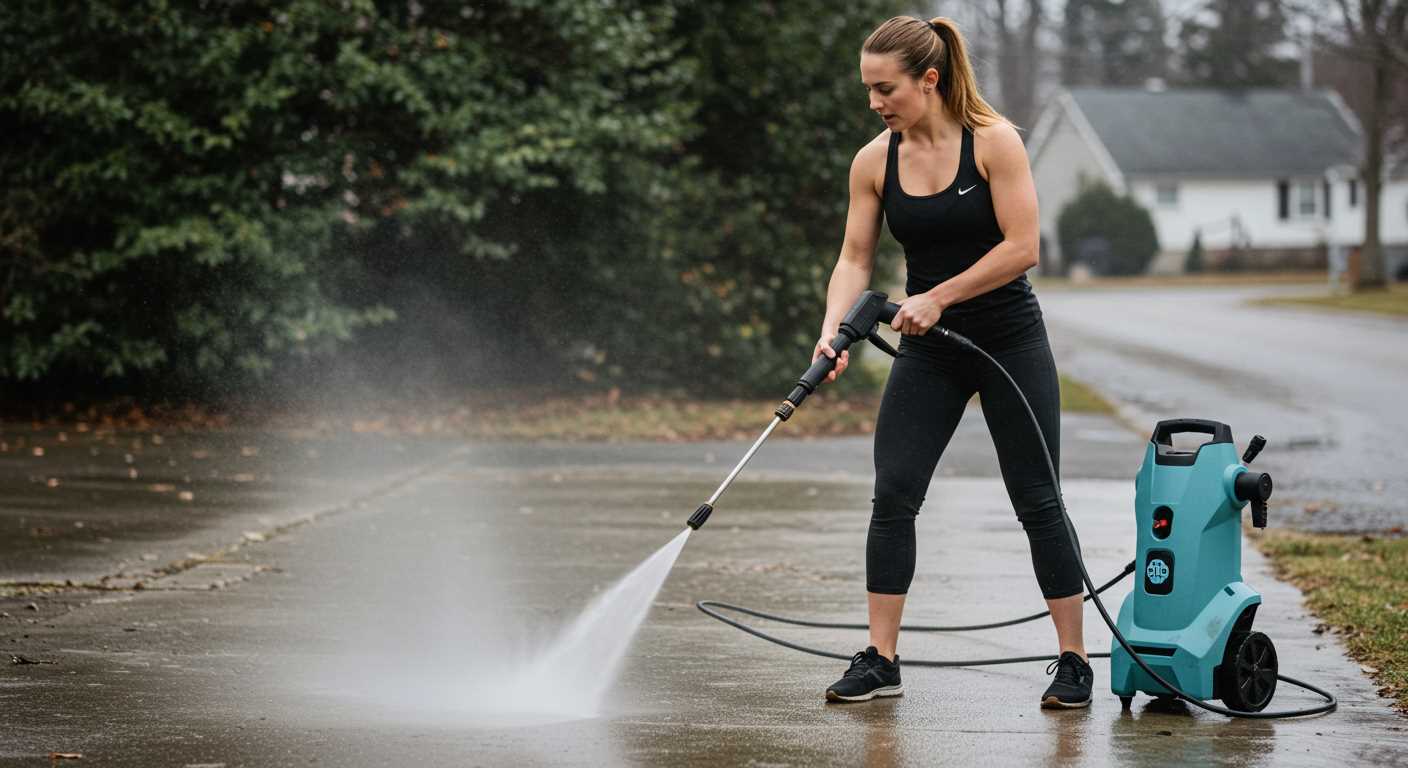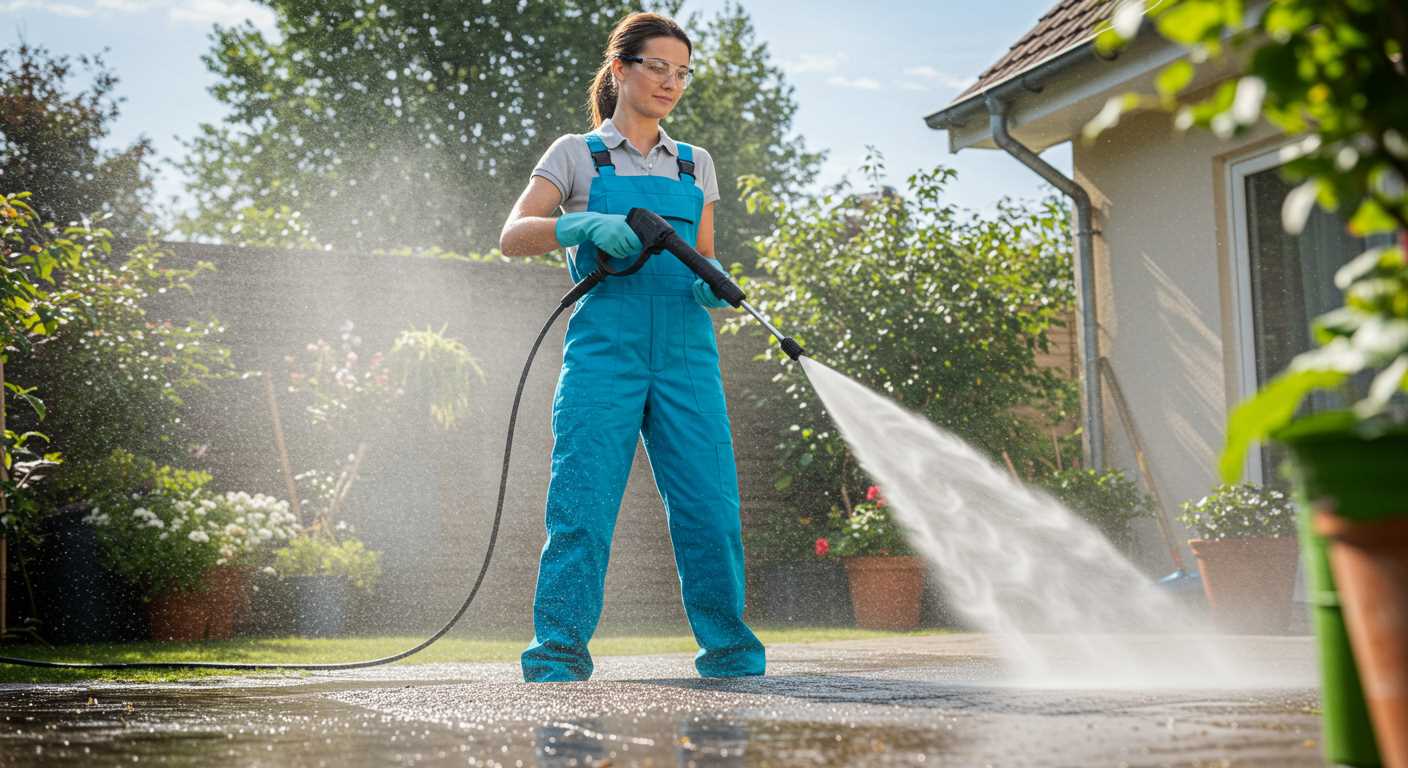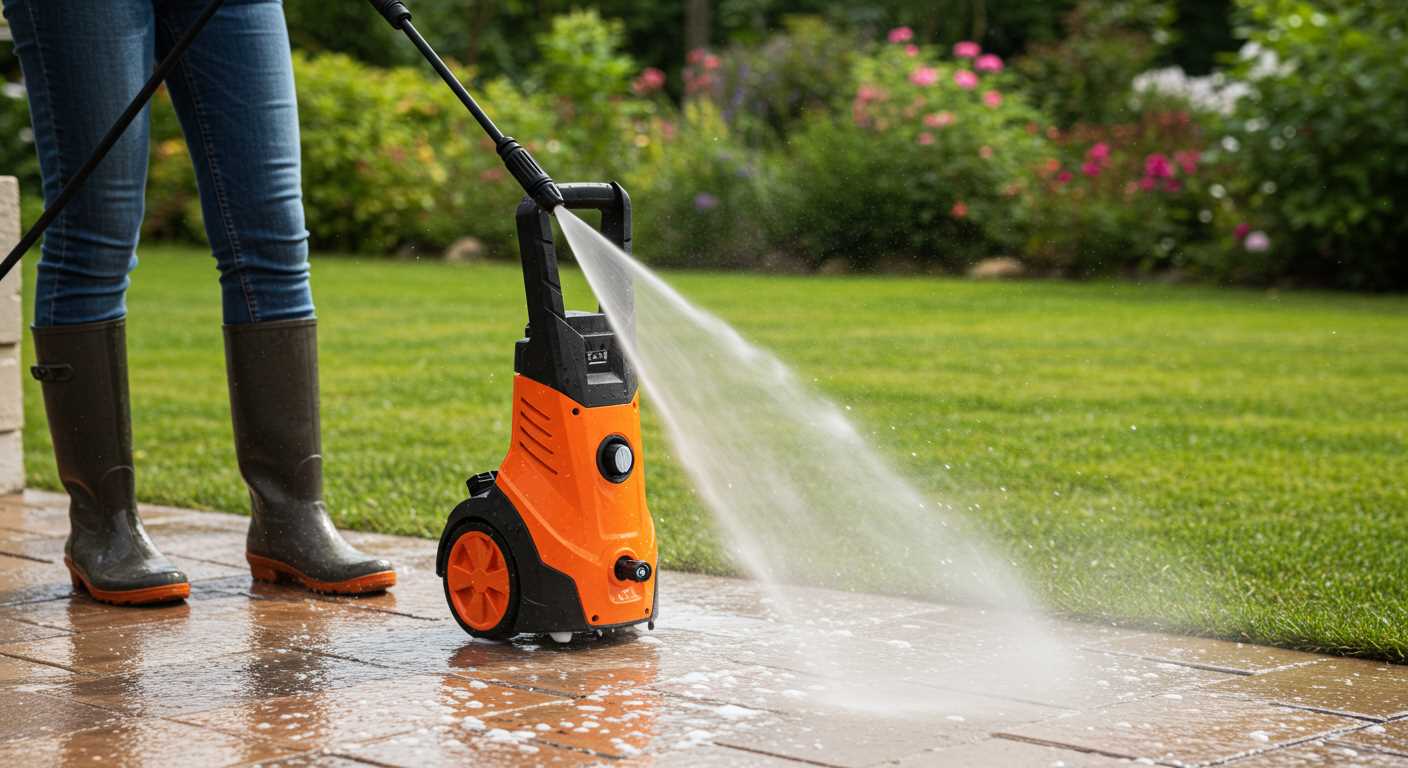


To prevent damage from freezing temperatures, make sure to drain all water from the unit. This process entails disconnecting the water supply and running the machine until no more liquid flows through the nozzle. A few minutes dedicated to this task can save you from costly repairs later.
Next, consider using a pump protector, a solution specifically designed to lubricate and safeguard internal components against frost. I always keep a bottle on hand during the colder seasons. Just pour it into the inlet, and let the machine run for about 30 seconds. This step is indispensable for maintaining the longevity of your equipment.
Store the cleaner in a sheltered location, ideally indoors. A garage or utility room will offer protection from harsh weather conditions. If indoor storage isn’t an option, cover the unit with a weather-resistant tarp to shield it from snow and moisture. Remember, exposure to the elements can lead to rust and other forms of deterioration.
Finally, keep the power cable and accessories in a dry environment. Moisture can cause electrical issues or mould growth. I always hang the hoses and cords on hooks to avoid kinks and damage. Taking these precautions will ensure that your cleaning device remains in top condition and ready for action when the temperatures rise again.
Storage Tips for Your Pressure Cleaner in Cold Months
First, ensure the device is completely drained of any remaining water. This prevents freezing and potential damage. Disconnect the hose and spray gun, and tilt the unit to let any trapped moisture escape. I often place the unit on a slight incline to aid this process.
Protecting Components
- Remove the detergent tank and clean it thoroughly; any leftover solution can become a sticky residue over time.
- Inspect the nozzle and other attachments for clogs. Soaking them in warm water can help dislodge any stubborn debris.
- Consider using a lubricant on the O-rings and seals. This keeps them from drying out and cracking during the colder months.
Choosing the Right Location
Find a dry, sheltered spot for placement. A garage or shed works best, keeping it away from harsh weather. If storing outside is the only option, use a heavy-duty cover to shield it from snow and ice.
Position the unit upright to prevent any internal issues. Avoid placing it directly on a concrete floor; instead, use a wooden pallet or mat to insulate against cold temperatures.
Regularly check on the equipment throughout the season. A quick visual inspection can catch any potential problems before they escalate. By taking these steps, you can ensure your cleaning equipment remains in peak condition and ready for use when warmer weather returns.
Drain the Water System Thoroughly
Begin by disconnecting the garden hose from the inlet. This step prevents any residual water from remaining in the pipework. Next, locate the water outlet on the machine; it’s often at the front or side, depending on the model.
Remove Remaining Liquid
With the outlet identified, turn on the cleaner for a few seconds without any attachments. This action will expel any remaining water from the system. Make sure to keep the trigger pressed to ensure full drainage. If your model has a detachable lance or nozzle, take those off as well to allow water to escape freely.
Empty the Detergent Tank
If there’s detergent left in the reservoir, empty it out. Rinse the tank with clean water to prevent any residue from drying and possibly clogging the system. After rinsing, leave it upside down to ensure all liquid has been removed. By taking these steps, you’ll safeguard the internal components against freeze damage.
Clean the Nozzle and Accessories
Begin with the nozzle. After each use, I always rinse it thoroughly to remove any debris or detergent residue. A clogged nozzle can affect performance, so I recommend using a soft brush or a pin to clear any blockages gently. Be careful not to damage the nozzle’s orifice during this process.
For the accessories, such as brushes and extension wands, I soak them in warm, soapy water for a few minutes. This helps dissolve any stubborn grime. Once soaked, a gentle scrub with a soft cloth or sponge is often enough to bring them back to their original condition. Rinse everything well and allow it to air dry completely.
Pay special attention to any quick-connect fittings. I always ensure these are free from dirt and debris; a clean connection prevents leaks and ensures an optimal seal. I use a small brush to scrub the inside of the fittings, followed by a thorough rinse.
Regular maintenance of these components not only prolongs their lifespan but also enhances overall performance. I’ve seen too many units suffer from neglect in this area, leading to costly repairs or replacements. A little effort goes a long way in preserving your equipment’s functionality.
Remove and Store the Hose Properly
Detach the hose from the unit carefully, ensuring no water remains inside. A quick inspection for any cracks or wear is advisable; a damaged hose can lead to leaks when you use it again. Once disconnected, lay the hose flat to release any trapped moisture. Avoid coiling it tightly, as this can create kinks that may weaken the material.
Securing the Hose
After ensuring it’s completely dry, store the hose in a cool, dry place. A dedicated storage bin or a hook on the wall can prevent it from being stepped on or snagged. If you have attachments like a foam gun, like the best car wash foam gun for pressure washer, store them together with the hose in an organised manner for easy access next season.
Maintenance Tips
Occasionally, it’s wise to apply a silicone spray to the hose’s exterior. This helps maintain flexibility and prevents cracking during cold months. A little preventive care goes a long way in ensuring your equipment is ready for action come spring.
Check and Replace Any Worn Parts
Inspect the machine for any signs of wear before putting it away. Focus on the O-rings and seals; these small components often deteriorate over time and can lead to leaks. I recall a colleague who overlooked a worn O-ring, resulting in significant water loss during the next use.
Next, examine the spray gun and wand for cracks or damage. A broken wand can affect performance and safety. If you notice any issues, replace these parts immediately. During one winter preparation, I found a hairline crack in my spray gun, which I wouldn’t have spotted without a thorough check.
The hose is another critical area. Look for abrasions, kinks, or signs of wear. A compromised hose can reduce pressure and efficiency. I remember having to replace a hose that had been improperly stored, leading to frustrating performance issues in the spring.
Lastly, check the motor and pump for any unusual sounds or leaks. If something seems off, it’s wise to consult the manual or a professional before the next use. Regularly maintaining these components not only extends the life of the equipment but also ensures optimal performance when you need it most.
Use Anti-Freeze Solutions If Necessary
If you live in a region where temperatures drop significantly, using an anti-freeze solution is a smart move. I remember a particularly harsh winter some years ago when I neglected this step. My machine was left unprotected, and when spring arrived, I discovered cracks in the pump. A costly lesson!
To prevent damage, consider using a non-toxic anti-freeze specifically designed for cleaning equipment. This type of solution can help safeguard internal components from freezing temperatures. Ensure you follow the manufacturer’s guidelines for the correct dilution ratio. After draining the water system, pour the solution into the inlet, allowing it to circulate through the system. It’s a straightforward way to enhance longevity.
Choosing the Right Anti-Freeze
Not all anti-freeze solutions are suitable. Opt for products that are safe for plastics and rubber, as many components of these machines are made from such materials. I always check for labelling that confirms compatibility with cleaning devices. The right choice makes all the difference, preventing any adverse reactions that could lead to damage.
Final Checks
Once the anti-freeze is in place, give the machine a gentle shake to ensure it’s evenly distributed. Afterward, store it in a dry, sheltered spot away from extreme cold and heat. I’ve found that keeping it in a garage or shed helps maintain a more stable temperature, further reducing the risk of freeze damage. Taking these precautions has kept my equipment in prime condition through many winters.
Find an Appropriate Storage Location
Choose a space that’s dry, cool, and well-ventilated. I’ve seen too many machines ruined because they were left in damp basements or garages where moisture could accumulate. Ideally, a temperature-controlled area is best to prevent freezing temperatures from causing damage. A shed or a utility room can work well, just make sure it’s not exposed to extreme conditions.
Elevate From the Ground
Consider placing the equipment on a shelf or a platform. During my years in the field, I noticed that storing items off the ground not only keeps them dry but also protects them from potential flooding or pests. An elevated position can prevent water damage and keep critters from nesting inside any openings.
Protect from Dust and Debris
Cover the unit with a breathable cloth or tarp. This simple step has saved many machines from dust buildup, which can interfere with functionality. I’ve learned that a clean environment is just as important as a dry one. A dedicated storage bag can also be a great investment, ensuring everything stays neat and tidy.
Maintain Electrical Connections and Cables
Ensure all electrical components are in optimal condition to prevent damage during colder months. Disconnect the power source and inspect the connections for any signs of wear or fraying.
- Clean the connectors with a dry cloth to remove dirt or moisture.
- Inspect cables for cracks or cuts. Any damaged wire should be replaced immediately to avoid potential hazards.
- Utilise electrical tape to secure any minor abrasions temporarily until a full replacement can be made.
Storing electrical components in a dry place is crucial. Excess moisture can lead to corrosion, compromising functionality. Consider wrapping the cables in protective sleeves to safeguard against dust and moisture.
If your equipment has a removable power cord, detach it and store it separately. This not only protects the cord but also makes for easier access when needed. Remember, a well-maintained electrical system ensures reliable operation when you’re ready to use your cleaning tools again.
For those looking for enhancements, check out a rotating surface cleaner for pressure washer to boost your cleaning efficiency when the season turns back to use.
Cover the Pressure Washer for Protection
Using a protective cover is a simple yet effective way to shield your equipment from dust, debris, and moisture. I always recommend investing in a quality cover specifically designed for high-pressure cleaning units. This not only ensures a snug fit but also offers additional padding against potential impacts.
Choosing the Right Cover
When selecting a cover, look for durable materials that are weather-resistant. A cover with UV protection is ideal if your unit will be exposed to sunlight. I’ve seen units left uncovered degrade rapidly due to sun exposure, leading to faded components and brittle parts.
Securing the Cover
Ensure that the cover fits securely. Loose covers can flap in the wind, potentially allowing grit to enter or causing wear on the paint finish. If necessary, use bungee cords or straps to keep the cover in place. I’ve often had to deal with debris accumulation on uncovered units, which can lead to more extensive cleaning before the next use.
| Cover Feature | Benefit |
|---|---|
| Weather-resistant Material | Protects against rain and snow |
| UV Protection | Prevents fading and degradation |
| Secure Fit | Minimises dust and debris entry |
| Padded Design | Offers additional impact protection |
Covering your equipment isn’t just about cleanliness; it extends its lifespan and functionality. I’ve seen too many units suffer from neglect, leading to costly repairs. A little foresight goes a long way in maintaining your investment.





.jpg)


